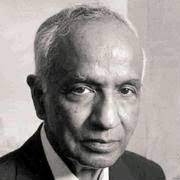
Subramanyan Chandrasekhar was an Indian-born American astrophysicist who contributed to our understanding of massive stars. He shared the Nobel Prize for Physics in 1983, with William A. Fowler Born in Lahore, into a Tamil family, Chandrasekhar grew up in Madras (today’s Chennai). Chandrasekhar studied physics at Presidency College, Madras, and went on to pursue graduate studies at the University of Cambridge, in England, in 1930. Here, he worked under R.H. Fowler on an improved model for the limiting mass of the degenerate star.
Chandrasekhar came up with a concept, later called the ‘Chandrasekhar Limit Chandrasekhar improved upon the accuracy of the calculation in 1930 by calculating the limit for a polytrope model of a star in hydrostatic equilibrium, and comparing his limit to the earlier limit found by E. C. Stoner for a uniform density star. He showed that there is a maximum mass that a white dwarf star could reach and beyond which it would collapse or form black hole. The value of this limit was derived as 1.44 times that of solar mass. He published a series of papers related to this between 1931 and 1935. Chandrasekhar Limit was initially ignored, sometimes ridiculed, by the community of scientists because it supported the existence of back holes. But they were considered impossible at that time. It took years before the idea was accepted.
In 1937, Chandrasekhar was recruited to the University of Chicago faculty, a position he remained at until his death. He and his wife became American citizens in 1953.
Varied interest
Chandrasekhar is considered to be one of the first scientists who combined the disciplines of physics and astronomy. In fact, he was known for mastering several fields. Chandrasekhar studied stellar structure, hydrodynamics, radiative transfer, mathematical theory of black holes and colliding gravitational waves.
For 19 years, he served as editor of the Astrophysical Joumal and turned it into a world-class publication.
Chandrasekhar was instrumental in establishing the Ramanujan Institute of Mathematics in Madras in 1940s. He had strong association with many scientific institutions and young scientists back in India. Chandrasekhar died in 1995.
Legacy
Chandrasekhar was fittingly honoured by NASA when it ran a naming contest for one of the Observatories that it was planning to name after Chandrasekhar. The Chandra X-ray Observatory was launched and deployed by Space Shuttle Columbia in 1999.
Picture Credit : Google




